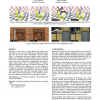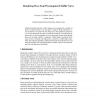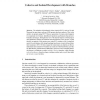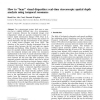131 search results - page 7 / 27 » Depth from sliding projections |
ECCV
2008
Springer
14 years 9 months ago
2008
Springer
Computer vision has traditionally focused on extracting structure, such as depth, from images acquired using thin-lens or pinhole optics. The development of computational imaging i...
SI3D
2006
ACM
14 years 1 months ago
2006
ACM
Rendering a scene using a single depth image suffers from disocclusion errors as the view translates away from the reference view. We present the depth discontinuity occlusion cam...
RT
1995
Springer
13 years 11 months ago
1995
Springer
Parallel projection z-buffer images are precomputed for a number of preset viewing directions on the unit sphere. Using the depth information, we can reconstruct a 3-D point from e...
FASE
2012
Springer
12 years 3 months ago
2012
Springer
The adoption of distributed version control (DVC), such as Git and Mercurial, in open-source software (OSS) projects has been explosive. Why is this and how are projects using DVC?...
BC
1998
13 years 7 months ago
1998
Abstract. In a stereoscopic system, both eyes or cameras have a slightly dierent view. As a consequence, small variations between the projected images exist (`disparities') ...




